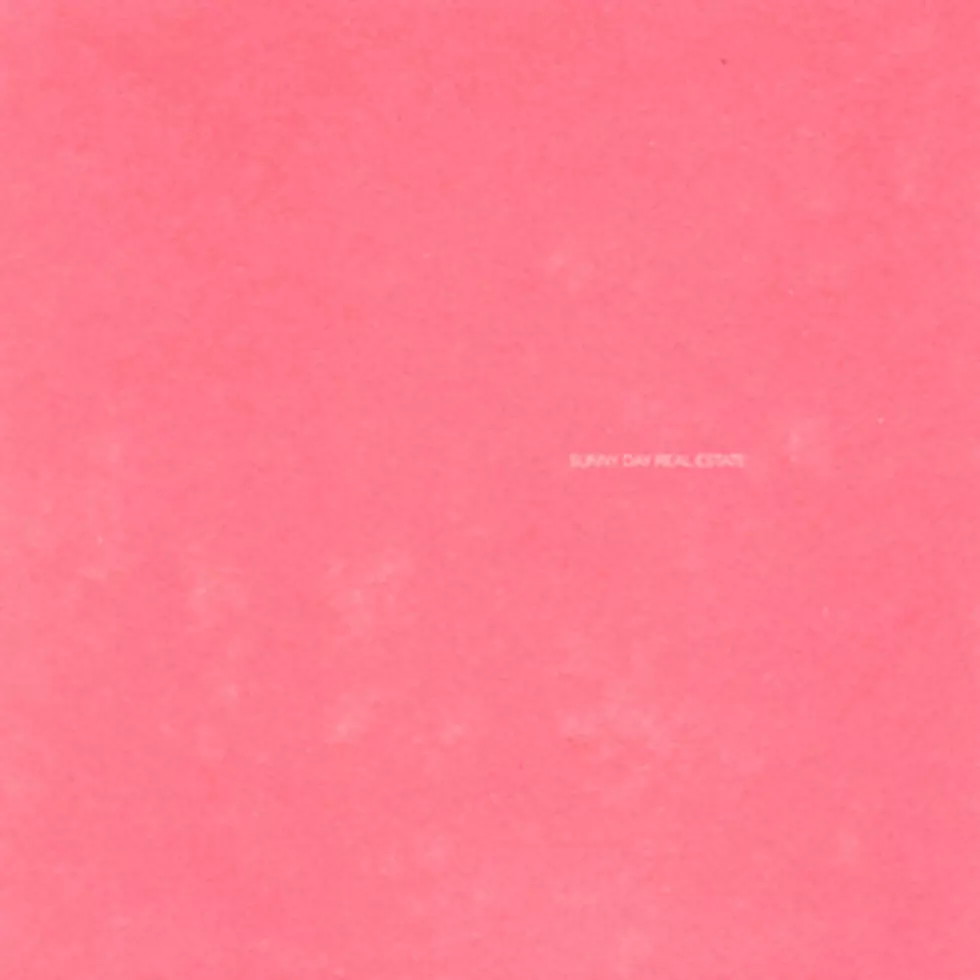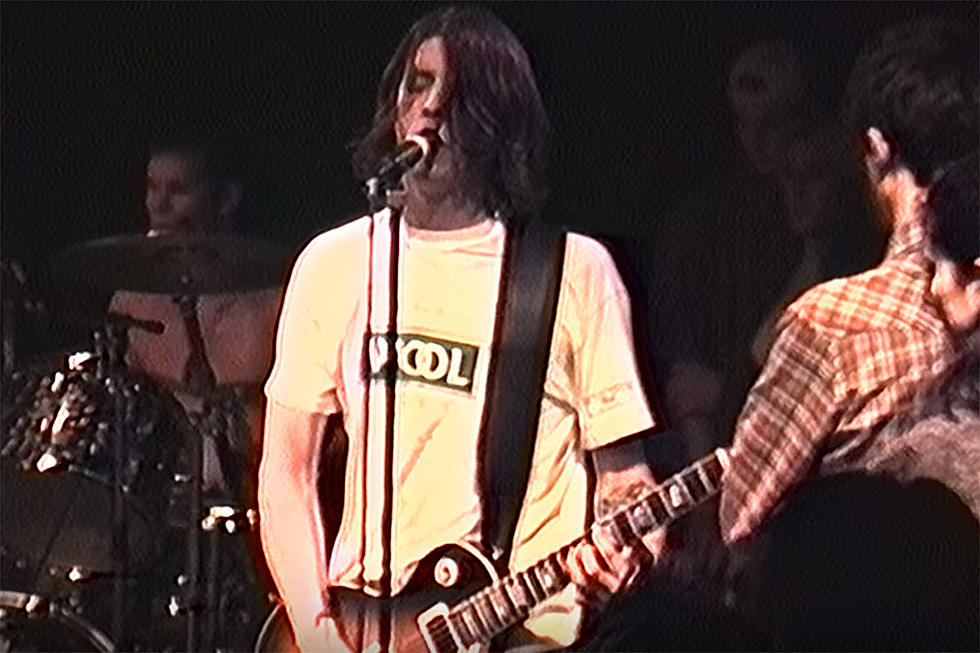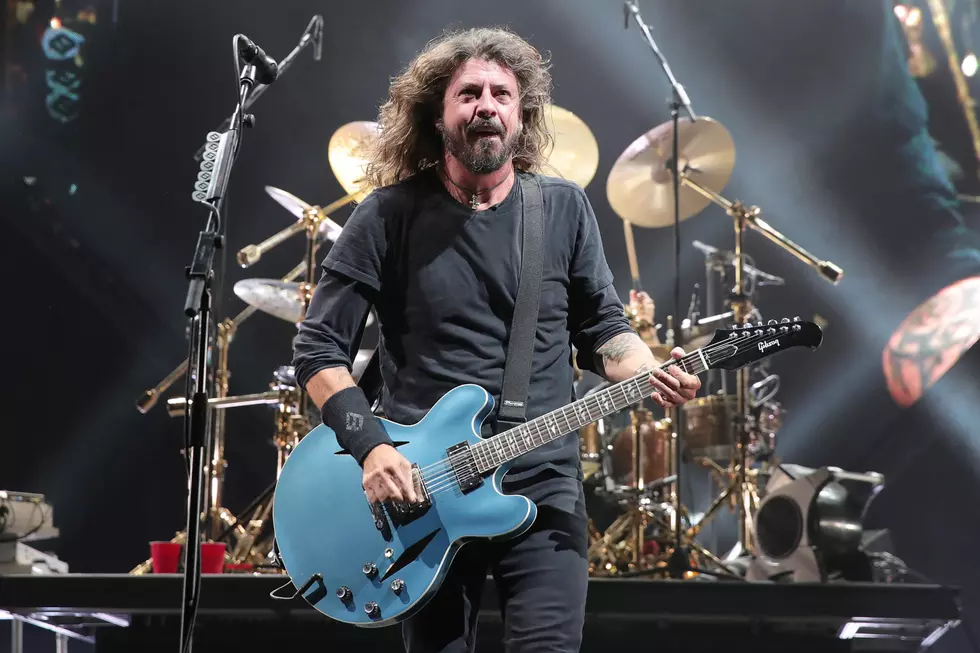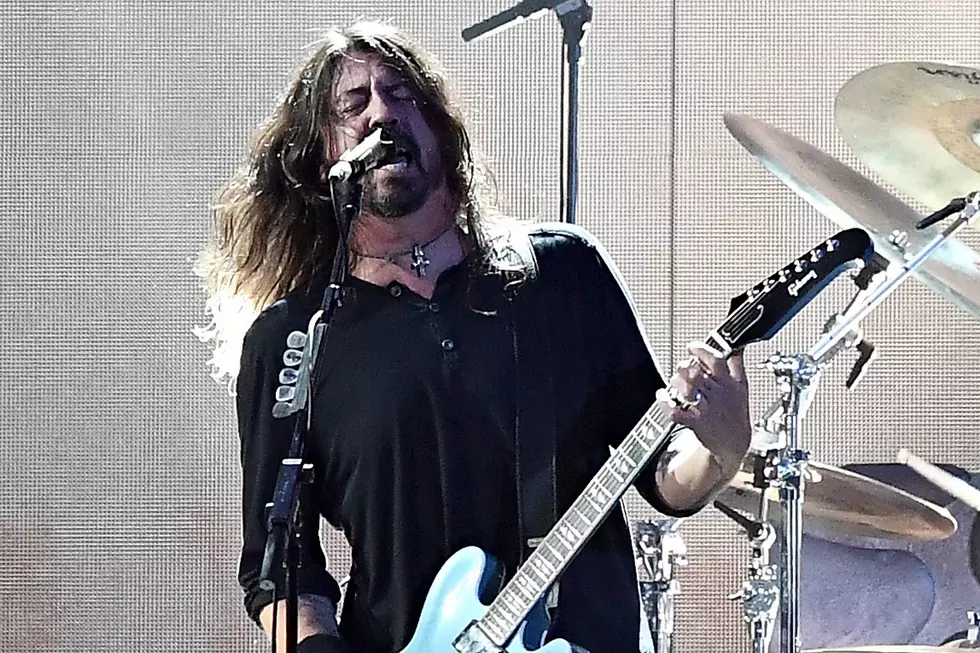
20 Years Ago: Sunny Day Real Estate Fall Apart But Still Release ‘LP2′
Sunny Day Real Estate’s LP2 is in some ways the quintessential follow-up. It wasn’t as easy to digest or as influential as its predecessor, Diary (the album that brought emo to the masses), and it clearly showed the band attempting to one-up themselves, taking risks that separated them from their former sound. Like many a sophomore release by a game-changing band, LP2 is overlooked — some Diary worshippers don’t even realize the band made any other albums. But is it one of those rare follow-ups that's actually worth revisiting from a new perspective?
The members of Sunny Day Real Estate were between the ages of 19 and 25 when they recorded Diary. It makes sense. That record is assured and sophisticated musically, but the band didn’t take a lot of risks outside the established framework. Diary is riddled with earnest emotions but doesn't present them tritely. The band — frontman Jeremy Enigk, guitarist Dan Hoerner, bassist Nate Mendel and drummer William Goldsmith — made an album with experimentalism that allowed it to cut deeper emotionally but remain within the realm of listenability. It’s often hailed now as precursor of emo’s mid-'90s “second wave,” and its continuing influence on bands like Cymbals Eat Guitars and Cloud Nothings is clear, if in nothing else but their elastic approach to rock sounds and brutal emotional nakedness.
It got to me too, the way it invariably did a lot of kids who grew up in the ‘90s and channeled their personal drama into their listening habits. Like many others, I don't think I can talk about “Song About an Angel" without recounting a teenage heartbreak no one cares about but me. (Though I still have no idea what that song is actually about.) And, for a teenager with a wide eyes and a wide-open heart, it was an easy album to cling to. It feels complete and whole as a statement. Diary has a name that is a clear declaration of intent and an anti-social rallying cry. Diary has a strange, evocative cover. Diary is a classic.
If LP2 wasn’t an afterthought, it certainly looks like one. Diary is the band’s statement of purpose; LP2 is the sound of the band falling apart. They were apparently coming apart at the seams during the recording of the album (by the time it was released, they’d already been broken up for a month). None of the members seemed to have a real desire to finish it. They didn’t even give Sub Pop any cover art (besides a half-serious request that it be pink), nor did they provide a title. LP2 was the name Sub Pop gave to the release because hey had to call it something.
The music itself wasn’t even really finished. “Friday,” “8” and “Rodeo Jones” were all leftovers from the Diary sessions. And some of Enigk’s lyrics aren’t only indecipherable (which was actually the case on Diary, too) but sometimes on LP2, he's actually singing gibberish. The members were all so sick of each other’s company, they just wanted to lay down the tracks and get the hell out of there.
LP2 does build on Diary. In its emotiveness and its musical slipperiness, its an appropriate sequel. But it has little of that album’s clarity and balance. For instance, “Friday” is a strange choice for an opener — it's lumbering, angry but woozy and has a chorus that stalls and staggers in a way more appropriate for a mid-album climax.
The album is also less rooted in the straightforward punk structures that made Diary a touchstone for pop-punkers and emo kids alike. For angsty teens in general — the fans who got the band pigeonholed despite the adventurousness of their later records — the album has less to grip onto. LP2’s difficulty all but ensured Diary would become SDRE’s signature album and that LP2 would largely be left to the hardcore fans. A web comment on LP2, typical of average listener sentiment: "I loved Diary and have never liked this record. I'm just glad it doesn't live in my house anymore.” It's as if it were a roommate who wouldn’t stop eating his cereal.
The album’s deformities and uneasy relationship to the band’s classic material is what makes it a compelling listen, especially two decades later. It's an album that puts an almost awkward amount of control into the listener's hands. The lyrics that were written are vague, fleeting images or – at their strangest – they're mere collections of words that evoke feelings without actually describing anything. The words that are there become signposts toward meaning, rather than meaning something themselves. The words that aren’t there are yours to do with what you choose. What's "5/4" about? However it makes you feel.
Musically, the album is jagged and turbulent. It makes no efforts to temper its own mood swings. “Red Elephant” has a chorus that's catchy – almost painfully so – but seemingly as an afterthought. Its stickiness only belatedly obvious. “Theo B” is bent on rumbling — the secret weapon of the band has always been Mendel and Goldsmith’s intense interaction — until, suddenly, its more about lifting up an exultant chorus. Tumult reigns in places (the swirl of “Iscarabaid”); other spots are the domain of pure, wordless beauty (the wall of harmony on “J’Nuh”). "5/4" is two-thirds panoramic prettiness and one-third crumbling walls.
But the heart of the album is "8." It begins with a guitar figure, grimey and hard like a chain link fence, soon joined by Enigk's voice – a floating, pretty thing that lifts him near-weightlessly over the top. Then, on a dime, "8" becomes rhythmically ferocious and violent. Enigk demands, "Which side are you on? Which lie do you own?" They're thoughts you might scream at someone in a dream, feelings that barely rise above the sediment of the mind. Guitar, bass and drums press forward in two-chord figures, stepping back and hurtling forward. It's at once urgent and obscure. It's music that aims to slice its way straight into to the bloodstream with the blunt end of the knife.
Sunny Day Real Estate got back together in 1997 and released two more albums: 1998's How It Feels to Be Something On and 2000's The Rising Tide, both of which continue LP2's movement away from the angst of punk and toward greater musical depth. Although the band broke up again in 2001 (then got back together in 2009), they've toured a few times but haven't put out anything new except for one song on a split 7" with Circa Survive. Of course, Dave Grohl recruited Mendel and Goldsmith to be the rhythm section for Foo Fighters back when he was just bringing on other musicians in 1994, and although Goldsmith's tenure was brief, Mendel has been a Foo Fighter ever since. He also recently branched out with his own solo project Lieutenant.
But even for those lovers of Diary who backed off from the initial challenge of LP2, it's indeed an album worth revisiting. It complicates the band's legacy, elevating them beyond the "emo" label, which happens to short sell the breadth of their musical accomplishments. And it's an album that shows sometimes the most moving sentiments are half-formed and ugly.
The Top 100 Alternative Albums of the '90s
More From Diffuser.fm









